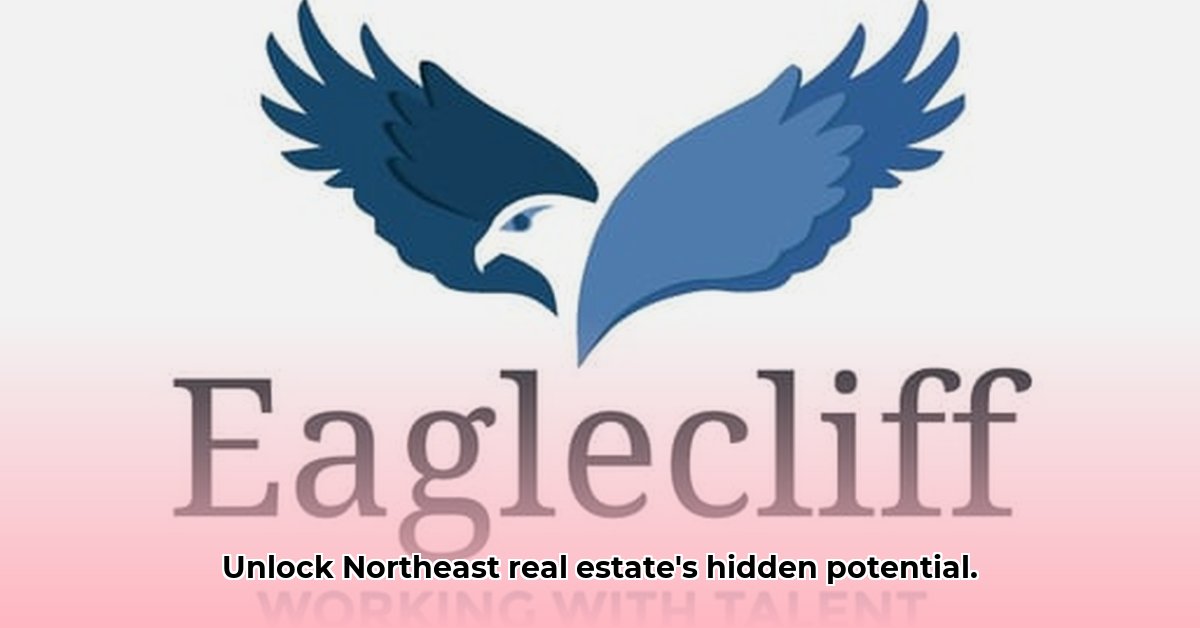
EagleCliff Real Estate Partners (ECREP) is a significant player in the competitive Northeast real estate market, focusing on areas with high demand and limited supply. Their strategy combines institutional investment approaches with hands-on expertise across diverse asset classes. However, a lack of readily available financial data presents a challenge in comprehensively evaluating their performance. This report analyzes their strengths, weaknesses, opportunities, and threats (SWOT), offering insights for investors, stakeholders, and ECREP itself. For comparison, see data from other firms like Bronstein Properties.
ECREP's Investment Philosophy: A Long-Term Value Creation Approach
ECREP's investment philosophy centers on identifying undervalued properties in carefully selected, undersupplied Northeast and Mid-Atlantic markets. They prioritize long-term value creation over short-term gains, focusing on repositioning, development, and opportunistic acquisitions. Their strategy involves actively improving assets, not merely buying and holding. This approach suggests resilience against short-term market fluctuations. However, the absence of detailed financial statements limits a quantitative assessment of this long-term strategy's effectiveness.
ECREP's Strengths and Weaknesses: A Balanced Perspective
ECREP's success stems from several key strengths, but also faces areas requiring improvement:
Strengths:
- Experienced Team and Network: ECREP boasts a team with extensive experience from top-tier firms, indicating a high level of expertise and access to valuable market intelligence and deal flow. This network likely plays a crucial role in identifying and securing advantageous investment opportunities.
- Targeted Market Selection: By focusing on undersupplied markets, ECREP aims to minimize competition and increase the potential for higher returns. This strategic focus on niche markets reduces exposure to broader market volatility.
- Value-Add Approach: Their active involvement in repositioning and developing properties creates significant value, potentially generating higher returns than a purely buy-and-hold strategy. This active management approach distinguishes them from passive investors.
Weaknesses:
- Lack of Transparency: The limited availability of financial data significantly hampers a thorough performance evaluation. Greater transparency is crucial for building trust among investors and stakeholders. This lack of information makes it hard to fully assess their risk profile.
- Regional Concentration: A concentrated focus on the Northeast and Mid-Atlantic markets exposes them to localized economic downturns or regulatory changes. Diversification into other geographic areas could mitigate this risk.
- Data Limitations: The current absence of robust financial data presents a significant challenge for investors seeking to conduct comprehensive due diligence. This can make investment decisions more complex and risky.
EagleCliff's Future Trajectory: Opportunities and Challenges
ECREP possesses considerable growth potential, but its future depends on addressing existing challenges and capitalizing on emerging opportunities.
Opportunities:
- Geographic Expansion: Expanding into new, strategically selected markets could diversify their portfolio and mitigate regional risks. Careful expansion would need to balance the benefits of diversification with the potential for added complexity and risks.
- Enhanced Transparency: Increasing transparency by sharing more financial data could build investor confidence, attract additional capital, and facilitate more rigorous performance analysis. This added transparency would legitimize their activities and make attracting capital easier.
- Strategic Partnerships: Collaborating with other firms could enhance their deal flow, access to resources, and capabilities in new markets. Strategic alliances would allow them to leverage more expertise and resources than they could achieve independently.
Challenges:
- Economic Downturns: Real estate is inherently cyclical. ECREP needs robust risk management strategies to mitigate potential losses during economic downturns. Proactive measures would be necessary to protect investment portfolios.
- Regulatory Changes: The real estate industry is subject to significant regulatory changes. ECREP must proactively monitor and adapt to these changes to avoid significant operational disruptions and financial impacts. Adaptability will be key to maintaining profitability.
- Maintaining a Competitive Advantage: The real estate market is highly competitive. ECREP must continuously innovate and refine its strategies to maintain a competitive edge and attract investors. Continuous adaptation is critical for long-term success.
Actionable Steps for Stakeholders
Several key steps are crucial for different stakeholder groups to support ECREP's future success.
ECREP Management: Prioritize enhancing portfolio tracking systems, securing additional funding, strengthening industry relationships, refining investment criteria, exploring geographic expansion, implementing comprehensive risk management, and strategically exiting underperforming assets.
Potential Investors: Conduct thorough due diligence, request detailed financial data, assess management expertise, monitor long-term performance, and maintain regular communication with ECREP regarding market analysis, risk tolerance, and investment performance.
Regulatory Bodies: Ensure strict regulatory compliance and proactively adapt to evolving regulations, implementing risk mitigation strategies, and maintaining transparency regarding regulatory compliance.
Conclusion: The Importance of Transparency and Data
EagleCliff Real Estate Partners demonstrates a promising investment strategy, but its success hinges on addressing its weaknesses, particularly the lack of transparent financial data. Increased transparency would not only enhance investor confidence but also facilitate more robust performance analysis, ultimately enabling ECREP to attract greater investment and realize its full potential. A focus on enhancing transparency, improving data availability, and actively managing risks will be crucial for long-term success.